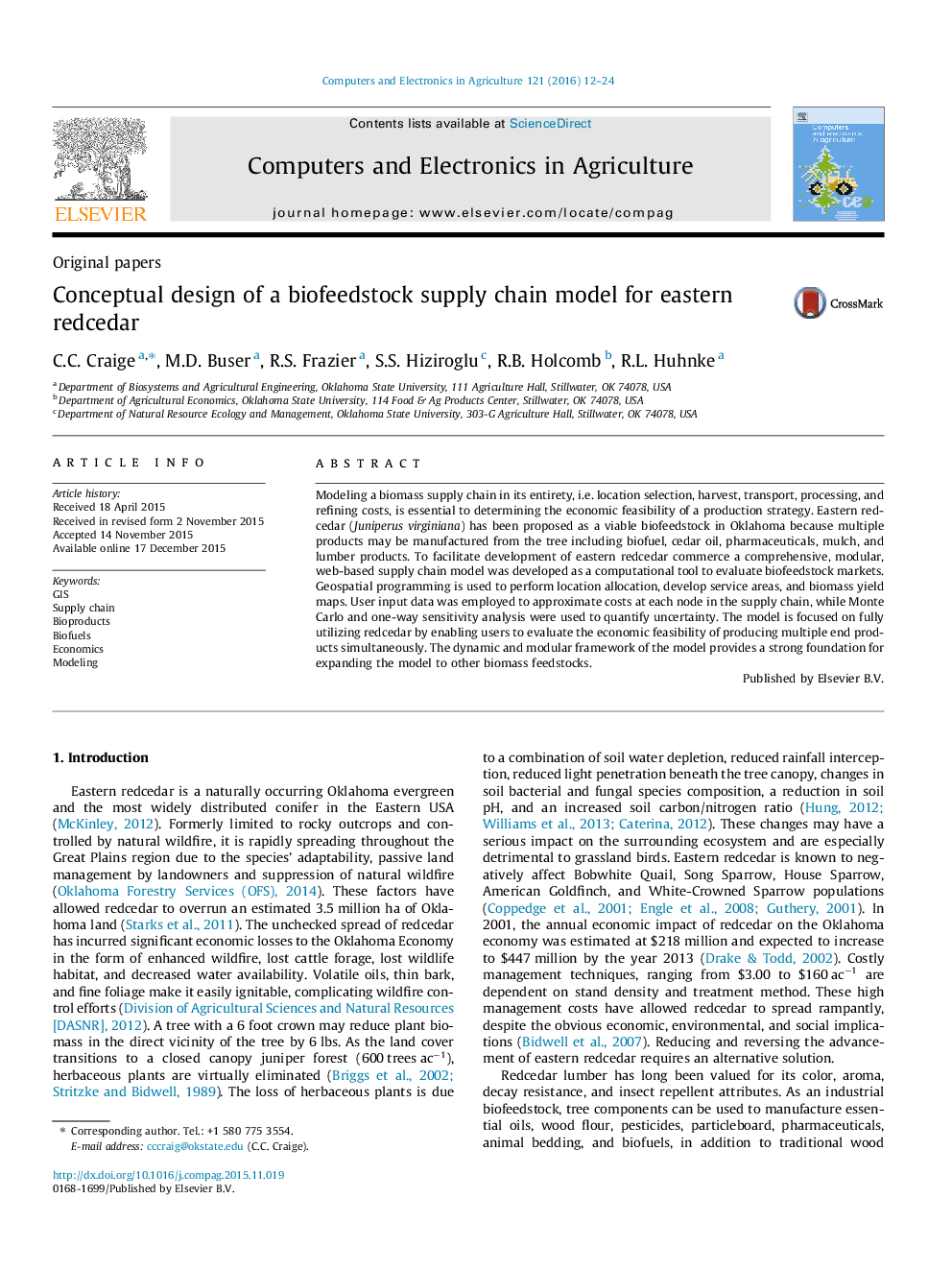| Article ID | Journal | Published Year | Pages | File Type |
|---|---|---|---|---|
| 83984 | Computers and Electronics in Agriculture | 2016 | 13 Pages |
•Creation of an online, techno-economic supply chain model.•Use of web-based GIS location-allocation, mapping, and service area generation.•Stochastic estimate of transport and harvest costs using Monte Carlo analysis.•Modular interface and database design for incorporation of additional biofeedstocks.
Modeling a biomass supply chain in its entirety, i.e. location selection, harvest, transport, processing, and refining costs, is essential to determining the economic feasibility of a production strategy. Eastern redcedar (Juniperus virginiana) has been proposed as a viable biofeedstock in Oklahoma because multiple products may be manufactured from the tree including biofuel, cedar oil, pharmaceuticals, mulch, and lumber products. To facilitate development of eastern redcedar commerce a comprehensive, modular, web-based supply chain model was developed as a computational tool to evaluate biofeedstock markets. Geospatial programming is used to perform location allocation, develop service areas, and biomass yield maps. User input data was employed to approximate costs at each node in the supply chain, while Monte Carlo and one-way sensitivity analysis were used to quantify uncertainty. The model is focused on fully utilizing redcedar by enabling users to evaluate the economic feasibility of producing multiple end products simultaneously. The dynamic and modular framework of the model provides a strong foundation for expanding the model to other biomass feedstocks.
